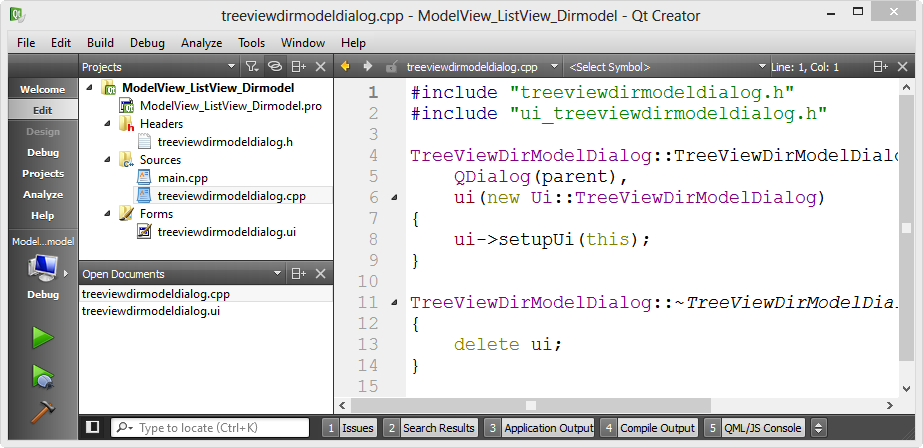
When used synchronously, QTcpSocket doesn't require an event loop. For this reason, we recommend that you use synchronous sockets only in non-GUI threads. If used in the GUI thread, this might freeze the application's user interface. The main disadvantage of the waitFor.() approach is that events won't be processed while a waitFor.() function is blocking.
#Qt sync tutorial code#
Synchronous sockets often lead to code with a simpler flow of control. For example, after calling the non-blocking QTcpSocket::connectToHost() function, call QTcpSocket::waitForConnected() to block the thread until the connected() signal has been emitted. To get blocking behavior, call QTcpSocket's waitFor.() functions these suspend the calling thread until a signal has been emitted. In your slot, call QTcpServer::nextPendingConnection() to accept the connection and use the returned QTcpSocket to communicate with the client.Īlthough most of its functions work asynchronously, it's possible to use QTcpSocket synchronously (i.e., blocking). Call QTcpServer::listen() to set up the server, and connect to the QTcpServer::newConnection() signal, which is emitted once for every client that connects. If you need to handle incoming TCP connections (e.g., in a server application), use the QTcpServer class. When reading from a QTcpSocket, you must make sure that enough data is available by calling QTcpSocket::bytesAvailable() beforehand. Since QTcpSocket inherits QIODevice, you can use it with QTextStream and QDataStream. QTcpSocket represents two independent streams of data: one for reading and one for writing. You can write data to the socket using QTcpSocket::write(), and read data using QTcpSocket::read(). It relies on the event loop to detect incoming data and to automatically flush outgoing data. QTcpSocket works asynchronously and emits signals to report status changes and errors, just like QNetworkAccessManager. At any time, the peer can close the connection, and data transfer will then stop immediately. Once the connection has been established, the IP address and port of the peer are available through QTcpSocket::peerAddress() and QTcpSocket::peerPort(). You can use QTcpSocket to implement standard network protocols such as POP3, SMTP, and NNTP, as well as custom protocols.Ī TCP connection must be established to a remote host and port before any data transfer can begin.

The QTcpSocket class provides an interface for TCP. It is particularly well suited to the continuous transmission of data. It is a reliable, stream-oriented, connection-oriented transport protocol. TCP (Transmission Control Protocol) is a low-level network protocol used by most Internet protocols, including HTTP and FTP, for data transfer. Since QNetworkReply is a subclass of QIODevice, replies can be handled synchronously or asynchronously i.e., as blocking or non-blocking operations.Įach application or library can create one or more instances of QNetworkAccessManager to handle network communication. The signals provided by QNetworkReply can be used to monitor each reply individually, or developers may choose to use the manager's signals for this purpose instead and discard references to replies. Replies to network requests are represented by the QNetworkReply class these are created by QNetworkAccessManager when a request is dispatched. The manager also coordinates the use of cookies to store data on the client, authentication requests, and the use of proxies. Once a request has been created, this class is used to dispatch it and emit signals to report on its progress. The coordination of network operations is performed by the QNetworkAccessManager class. Currently HTTP and local file URLs are supported for uploading and downloading. The URL specified when a request object is constructed determines the protocol used for a request. Network requests are represented by the QNetworkRequest class, which also acts as a general container for information associated with a request, such as any header information and the encryption used. The API provides an abstraction layer over the specific operations and protocols used (for example, getting and posting data over HTTP), and only exposes classes, functions, and signals for general or high level concepts. The Network Access API is a collection of classes for performing common network operations. The Qt Network C++ Classes page contains a list of the C++ classes in Qt Network.

It offers lower-level classes such as QTcpSocket, QTcpServer and QUdpSocket that represent low level network concepts, and high level classes such as QNetworkRequest, QNetworkReply and QNetworkAccessManager to perform network operations using common protocols.

The Qt Network module offers classes that allow you to write TCP/IP clients and servers.


 0 kommentar(er)
0 kommentar(er)
